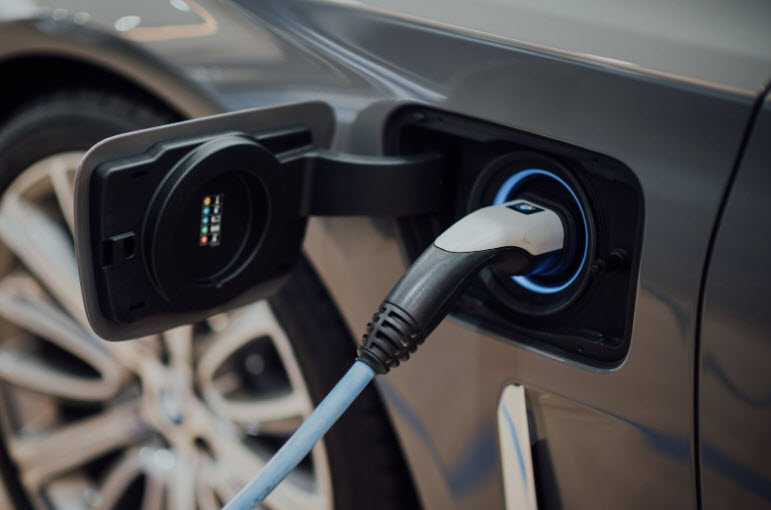The Critical Role of Battery Thermal Management in Electric Vehicles
Year over year, we’ve observed an exponential growth in the electric vehicle market. With considerable corporate investment and government subsidies, this growth is expected to continue for some time. Of course, longevity and vehicular performance are two of the main qualities that drive this growth; and while various technologies are integral to both of these factors, few components surpass the battery and effective thermal management in importance.
Keeping an EV’s battery optimally cooled is intrinsically linked to the performance and longevity of the vehicle. It is therefore important that this technology continues to evolve alongside the other sophisticated technologies present in modern electric vehicles.

In this article, we’ll discuss the importance of thermal management of EV batteries, how thermal management is currently performed, the limitations of each method, and cutting-edge solutions that are being developed.
Why Do Electric Vehicle Batteries Require Thermal Management?
Have you ever noticed that your phone or wireless headset loses its charge a lot faster when you’re outside in the cold instead of the warmth of the indoors? Similarly, have you noticed a decrease in your personal electronics’ performance on exceptionally warm days? If you have, you’ve likely concluded that batteries perform best when they are not subjected to extreme temperatures. While that intuition is correct, you may be unaware that there is a temperature “sweet spot” that most batteries require for optimal performance. For batteries that power electric vehicles, that optimal range is between 20 and 30 degrees Celsius (68 to 86 degrees Fahrenheit). It may seem surprising that the optimal temperature for an advanced electric vehicle battery exists within such a narrow range and, given how greatly temperatures can vary from one season to the next, it’s tempting to question the efficacy of electric vehicles in all but the most temperate climates. Fortunately, on-board thermal management systems are used to control the EV battery temperatures, thus improving its performance and lifespan.
Thermal management systems in electric vehicles don’t just help lessen the effects of a hot or cold day on the vehicle’s battery; they also play a key role in managing the high temperatures generated by the batteries themselves. For example, an EV battery that is consistently operating at temperatures between 70 and 100 degrees Celsius (158 to 212 degrees Fahrenheit) is at risk of a thermal runaway (a phenomenon in which a battery’s lithium-ion cell enters an uncontrollable self-heating cycle). Thermal runaways can result in the battery achieving incredibly high temperatures, which in turn could result in the expulsion of smoke or chemicals or even combustion.
Plugging into a fast-charging station will also heat the battery to a point that the thermal management system will need to intervene. The high current involved generates a considerable amount of heat that needs to be wicked away from the battery pack to avoid overheating. Thermal management isn’t just about dissipating heat; depending on the time of year, there may be a time when an EV’s battery must be warmed up before it can be successfully charged.
EV Battery Thermal Management Challenges
Thermal management processes, like anything else, are not perfect. Like any other system within an electric vehicle, thermal management is not without its challenges.
If the Thermal Management System uses liquid cooling to keep the battery at the optimal temperature, there is a chance that the liquid coolant can leak as the connections and battery ages. While a small coolant leak sounds like a relatively minor issue, if left unchecked, leaked coolant can degrade the battery to the point where its performance and lifespan is greatly reduced.
Corrosion and clogging are two more challenges of a liquid cooled system. Where liquid glycol is present, as it gets older, it can begin to corrode the cold plates (which are responsible for the transfer of heat from the battery to the coolant). Replacing the glycol as part of the regular maintenance of the vehicle will prevent this from happening. Clogging of the many narrow tubes and connections that transport the coolant is another challenge that could reduce the performance of the battery. It's therefore important to choose the right coolant for the system, and to change it regularly. For example, pure water as a coolant works well because its use minimizes corrosion, it has a high heat capacity and thermal conductivity. Deionized water on the other hand, removes harmful minerals and salts that could build up (narrowing the many channels) but has a higher resistivity than pure water. The higher the resistivity the greater likelihood for corrosion. Dielectric fluids like perfluorinated carbons or polyalphaolefin can also be used to cool an EV’s battery, both of which offer a number of benefits over the other coolant types.
The climate surrounding the vehicle is another obvious challenge that must be mitigated by the vehicle’s Thermal Management System. Depending on where the operator lives, the vehicle may be exposed to extreme heat or cold when it is not running. In these conditions a battery cooling system must be in place to keep the battery at ideal operating temperatures.
Lastly, the age of the battery is itself a challenge to the Thermal Management System. The older the battery, the more energy is lost as heat. The Thermal Management System must be able to deal with this excess of heat as the battery nears its end of life.
How EV Batteries are Kept Cool and Their Limitations
So how are EV batteries kept cool? We briefly referenced a liquid cooled system above, but liquid is by no means the only or even best method to keep an EV’s battery within the acceptable temperature range. Some of these methods are discussed below.
First, there’s air cooling systems. Air cooling works as you might think. Depending on whether the battery needs to be warmed or cooled, warm or cool air is passed through the battery. In some air-cooled systems, cabin air is circulated from the vehicle’s interior to the battery pack, warming or cooling the battery as necessary. While this does sound like a novel and simple way to keep the battery’s temperature within optimal range, it isn’t the most efficient option as the temperature of the cabin air will vary based on the preferences of the occupants and therefore may not be optimal for use by the Thermal Management System. Other air-cooled systems draw air in from outside to cool the battery, but fluctuations in external air temperature means the Thermal Management System may take longer to cool the battery during periods of extreme heat. With that said – air cooling is still a viable cooling method for most low to medium power applications. Even when the draw on the battery is significant, as it would be during a short period of rapid acceleration, air cooling systems will adequately cool the battery system.
Liquid cooling systems, as we’ve already seen, rely on a series of channels to deliver liquid coolant in and around the battery packs in order to wick excess heat from the system. Active liquid cooling uses pumps to circulate the coolant and fans and other devices to extract or redirect the heat. The glycol or water coolant does not come into direct contact with the battery. If the coolant is a direct-contact medium, like an oil, the viscous material will contact the battery cells directly to keep them cool. It should be noted that while other systems within a vehicle may also require cooling, EV batteries/battery packs are cooled separately due to the fact that the battery’s temperature must be kept much lower relative to the other systems. Keeping the cooling systems separate ensures the coolant responsible for managing the temperature of the EV battery is kept as cool as possible.
Cooling with conduction – while it is a tried-and-true method for managing heat, we won’t spend too much time discussing it for one simple reason, it is not a viable EV cooling application unless it is combined with another cooling method. Even if conduction cooling worked well on its own for this application, the size of the cooling system necessary to keep the battery pack at the desired temperature would be prohibitive.
Cooling by submersion. This type of cooling system is already in use to cool the world’s largest supercomputers, and while completely submerging the battery pack into the coolant is an effective thermal management strategy, there are two pretty big drawbacks. The first is that the heat wicking ability is limited to the heat capacity of the selected coolant medium. Secondly, submersion cooling is expensive. Since the battery and coolant liquid would increase in heat together, it would need to be paired with another cooling system in order to be effective within an electric vehicle application.
Modern Solutions for Cooling EV Batteries
There are some ingenious thermal management strategies currently being developed. One of which involves lasers, though it might not be in the way you think.
Before we get to how lasers are helping to keep EV batteries cool, we must first delve a bit into the structural battery pack trend. Put simply, structural battery packs leverage a process called adhesive bonding to bond cells to one another and then bond to upper and lower sheets of metal encasing the cells. By bonding all these components to one another the battery pack becomes a solid structure that strengthens the vehicle and adds rigidity (additional benefits include upwards of a 10% weight reduction in the vehicle, and fewer parts needed to match the strength provided by the structural battery pack).
Lasers play a vital role in the success of the structural bonding process. First, lasers are used to quickly and efficiently prepare/clean component surfaces prior to being bonded. The bonding material, known as thermal interface material, helps to regulate battery temperature while bonding components to one another. While that is interesting in and of itself, lasers are also used to add texture to the materials that transfer heat. Texture increases a material’s surface area and the more surface area a material has, the better the heat transfer.
Thermal Management is the Key to the Growth of EVs
A battery that is too warm or too cold will negatively affect performance. Since EVs are expected to operate in all types of climates, the continued refinement of thermal management processes is vitally important to the growth of the EV market. If electric vehicles are truly destined to surpass traditional combustion engine vehicles as the conveyance method of choice, all EV technologies, thermal management included, must continue to evolve.
If you’re interested in being part of the great EV rollout, helping to service and maintain the EVs of tomorrow and beyond, consider enrolling in George Brown College’s EV Technician Program.
